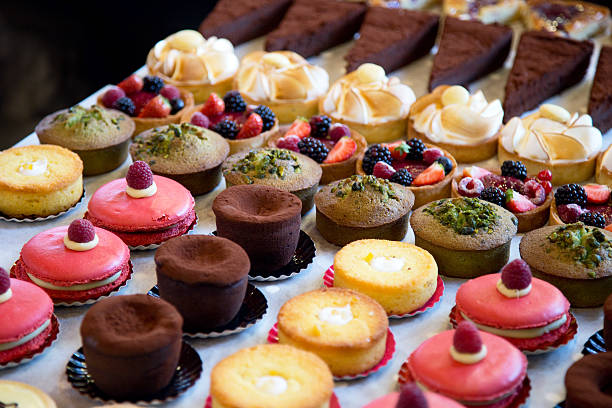Secrets of a Hot Bakery: What Makes It Smell So Irresistible?

Strong 8k brings an ultra-HD IPTV experience to your living room and your pocket.
The alluring aroma of a hot bakery is one of the most powerful sensory experiences that exists. Few things are as universally appealing as the warm, rich scent of freshly baked bread, croissants, and cookies drifting through the air. It has the power to evoke nostalgia, stimulate cravings, and even influence purchasing decisions. The question is: What exactly makes a bakery smell so good?
The answer is a fascinating combination of science, chemistry, and even psychology. It’s not just about baking; it’s about how heat, ingredients, and environment come together to produce that mouthwatering fragrance. Some bakeries even enhance their scents deliberately to attract more customers.
Let’s dive deep into the secrets behind a bakery’s irresistible aroma and explore how every aspect—from the chemistry of baking to strategic ventilation—plays a role in making those scents so enchanting.
The Chemistry Behind the Bakery Smell
At the core of a bakery’s aroma is a powerful chemical reaction known as the Maillard reaction. This is what gives baked goods their golden-brown crust and complex flavors.
The Maillard Reaction: Where Flavor Meets Aroma
The Maillard reaction occurs when amino acids (proteins) and reducing sugars react at high temperatures. This produces hundreds of aromatic compounds that give baked goods their distinct scent. The reaction starts at around 140–165°C (285–330°F) and intensifies as the temperature rises.
The Maillard reaction is responsible for the delicious aroma of:
Bread crusts
Pastries like croissants and Danish rolls
Cookies, biscuits, and crackers
Roasted coffee and chocolate
Caramelization: The Sweet Smell of Sugar
In addition to the Maillard reaction, the process of caramelization also plays a major role in creating the bakery’s aroma. When sugars are heated above 170°C (338°F), they break down and form new aromatic compounds that release rich, nutty, and sweet-smelling notes.
Caramelization is responsible for the scent of:
Golden caramel drizzles on pastries
Toasted marshmallows
Sugary crusts on crème brûlée
Together, these chemical transformations produce a symphony of scents that captivate anyone who steps near a bakery.
The Role of Ingredients in Bakery Aromas
The choice of ingredients greatly influences the final scent profile of baked goods. Each ingredient releases unique volatile compounds that contribute to the bakery’s overall smell.
Flour and Yeast: The Backbone of Bread’s Scent
Bread’s unique smell comes from a combination of fermentation and baking reactions.
Yeast fermentation produces ethanol and carbon dioxide, which help develop flavor.
When bread is baked, ethanol evaporates, carrying aromatic compounds that contribute to its pleasant smell.
The starch in flour breaks down into simple sugars, feeding the Maillard reaction.
Butter: The Secret to a Rich, Buttery Scent
Butter contains diacetyl, a natural compound that gives baked goods their signature buttery aroma. This is why croissants, puff pastries, and shortbread cookies have such a rich and comforting scent.
Spices and Flavorings: Warm, Inviting Aromas
Some of the most recognizable bakery smells come from the essential oils released by spices and flavorings.
Cinnamon: Creates a warm, slightly spicy, and sweet aroma.
Nutmeg and cloves: Add depth to holiday treats like gingerbread.
Vanilla extract: Enhances the sweetness of cookies and cakes.
Chocolate and Cocoa: Deep, Roasted Notes
Chocolate emits a rich, roasted aroma due to pyrazines, compounds that form when cocoa beans are roasted. This is why chocolate chip cookies smell heavenly while baking.
How a Bakery’s Environment Enhances Its Aroma
The way a bakery is designed affects how far the scent travels and how strongly it is perceived. Many bakeries intentionally optimize their layout to ensure the aroma reaches customers inside and outside the store.
Ventilation and Airflow: Spreading the Scent
Bakeries position their ovens strategically to ensure scents waft into the street.
Many bakeries use open kitchens so the aroma spreads freely.
Some establishments even adjust air circulation to direct scents toward the entrance.
Timing Matters: Baking at the Right Time
Many bakeries bake fresh in the morning when foot traffic is highest.
Some bake multiple batches throughout the day to maintain a continuous aroma.
The more frequently fresh bread and pastries are coming out of the oven, the stronger the scent and the more customers are drawn inside.
Artificial Enhancements: Do Some Bakeries Use Scent Marketing?
Some establishments take the power of scent even further by artificially enhancing the bakery smell.
Supermarkets sometimes pump artificial “fresh bread” scents into the air near bakery sections.
Theme parks and shopping malls use synthetic “baking cookie” fragrances to enhance the experience.
Some large chains use controlled scent diffusion systems to maintain a consistent smell.
While many artisan bakeries rely solely on natural aromas, some businesses have learned that enhancing these scents can significantly boost sales.
Psychological Effects: Why We Love the Smell of a Bakery
The smell of a bakery is deeply connected to emotions and memory. Studies show that scents associated with comfort foods like bread and cookies trigger nostalgia and create feelings of warmth and happiness.
Why Does the Smell of Baking Make Us Hungry?
The aroma of baked goods stimulates the brain’s reward system, increasing cravings.
Dopamine release makes us associate bakery scents with pleasure.
The smell of fresh bread has been scientifically shown to increase the likelihood of purchases.
This is why bakeries often position their best-smelling items near the entrance or bake fresh products at peak hours.
Conclusion: The Irresistible Magic of a Bakery’s Aroma
The enticing smell of a bakery is a carefully crafted blend of science, chemistry, and psychology. The Maillard reaction, caramelization, fermentation, and aromatic ingredients all work together to create a scent that is both nostalgic and irresistible.
Bakeries enhance this effect by optimizing their layout, baking at the right times, and sometimes even using artificial scent marketing to attract customers.
Whether it’s the golden crust of fresh bread, the sweetness of a sugar-glazed pastry, or the rich scent of melting chocolate, the magic of a bakery’s aroma is something that delights the senses and keeps people coming back for more.
Note: IndiBlogHub features both user-submitted and editorial content. We do not verify third-party contributions. Read our Disclaimer and Privacy Policyfor details.


